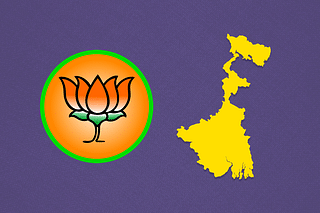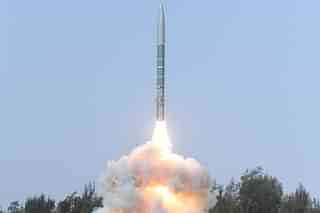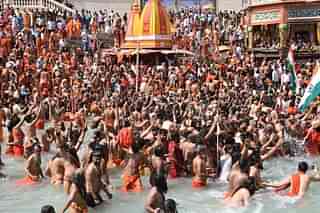Reports
Four Months Of PM JANMAN: A Close Look At Its Impact On UP's Bhoksa Tribe — Ground Report From Bijnor
Ankit Saxena
Apr 11, 2024, 04:53 PM | Updated Apr 12, 2024, 12:33 PM IST
Save & read from anywhere!
Bookmark stories for easy access on any device or the Swarajya app.
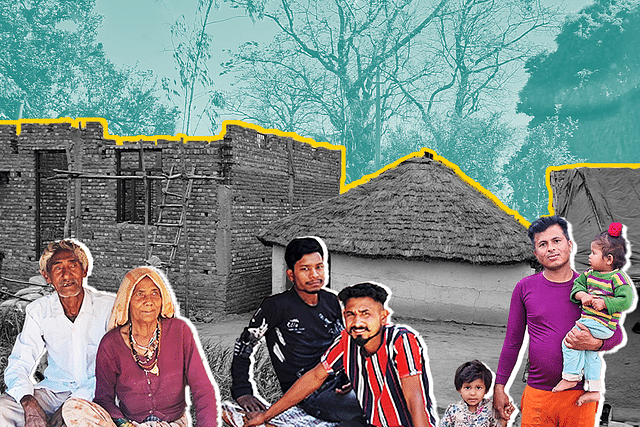
In Bijnor district of North-Western Uttar Pradesh, journeying nearly 70 km from the main Bijnor city, through narrow forest paths, leads to villages inhabited by the Bhoksa/Buksa tribe.
The term "Bhoksa" is derived from the word for mountain goat or an edible root.
Inhabiting in these remote areas for generations, the little-known Bhoksa community finds itself at a crossroads, between age-old tribal customs and the beckoning of mainstream society. However, their transition has been fraught with challenges, leaving them on the margins due to a lack of resources for growth.
For this ‘particularly vulnerable tribal group’ (PVTG), there is now a glimmer of hope, as they have received considerable attention under the Pradhan Mantri Janjati Adivasi Nyaya Maha Abhiyan (PM-JANMAN).
While part of the Bhoksa population lives in Uttarakhand, a portion of these tribals stayed in Uttar Pradesh, when Uttarakhand was carved out of the state in 2000.
Spread across nine hamlets situated at the foothills of the lesser Himalayas, on the UP-Uttarakhand border, this community comprises 815 households totalling 4,367 individuals and is the only tribe under the PM-JANMAN scheme in the state.
Launched by Prime Minister Narendra Modi on 15 November 2023, the scheme aims to furnish essential amenities to PVTG households and habitats. Often dwelling in isolated, and forested areas, these tribes face major accessibility challenges.
Hence, a holistic mission has been devised to ensure these habitats with fundamental facilities.
These include secure housing, clean drinking water, sanitation, improved access to education, health, and nutrition, as well as sustainable livelihood opportunities. With an allocation of Rs 24,000 crores spanning three years, the scheme brings together eleven interventions across nine ministries.
Under the same scheme, one of the larger hamlets solely inhabited by the Bhoksa tribe, Dhakia Bawan Sarai, has already started witnessing transformation as could be seen with the ongoing construction of pucca houses, school buildings, roads and more.
The village, as per the population statistics, accommodates the maximum population of the tribe in the state.
How has the Bhoksa Tribe been living
The tribe has its origins from the Suryavanshi Rajputs. Centuries ago, the families fled oppression in regions like Rajasthan and Punjab, seeking refuge in the forests.
Most of the community has been engaged in agriculture, specifically working as daily labourers on other people's farms, with limited to no resources.
As the tribe strives to integrate fully into the administrative system to improve their social mobility, their current lifestyle appears similar to that of any other village, missing any prominent markers or historical significance of the tribe.
Speaking to Swarajya, 80-year-old Balle Singh, one of the oldest member of the community, says, “Humaare purvaj yaha bhaag ke aaye the, jab jung chal rahi thi. Sab pahaado mein chup gaye, aur vahi ghar basaaya. Hum machali pakadne, aur sona chaandi ikhatha karne ka kaam karte the. Inhi jungalo mein kheti thi, kabhi yaha se baahar nahi nikle.”
He adds, “Pehle bhoksa janjaati ka apna saarang (theatre) hota tha, nritya hota tha. Mahilaaye jewar pehnti thi. Fir bhukmari mein sab dheere dheere bikta gaya. Bhoksa mein sab din ke liye kaamate the, aage ka nahi socha kabhi.”
(Our ancestors came here fleeing war. They hid in the mountains and made their homes here. They used to fish and gather gold and silver. They farmed in these forests and never moved out from here. The Bhoksa tribe had its own culture and its own dance. Women used to wear jewellery. Then gradually everything was sold off in famine. In Bhoksa, they earned only for the day, and never thought about the future.)
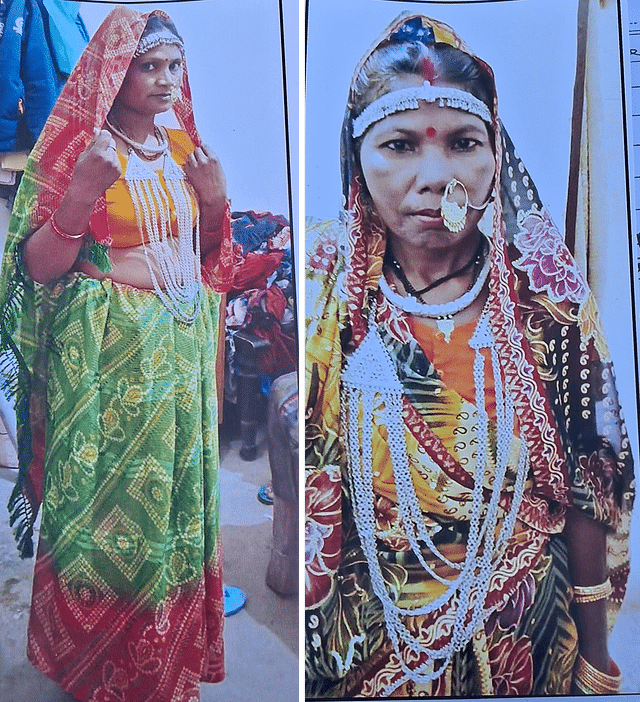
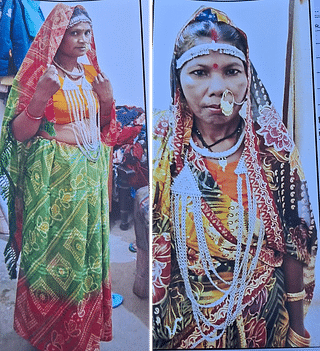
The Pradhan of the village, Seema Devi, who is from the next generation, tells Swarajya, “Humaare time pe purana pehnava, jewar, nritya, kheti, sab khatam ho chuka tha. Ab adivaasi sirf naam ke liye hai, yaha pe sabko majdoori, aur doosre gaon ke kheton mein kaam karne jaana padta hai, ussi se guzaara chalta hai.”
(During our time, the old way of dressing, jewellery, dance, farming, everything had ended. Now, the indigenous people exist only in name. Everyone here has to work as labourers and go to work in fields of other villages to make ends meet).
This became apparent while wandering through the village — years of isolation have kept the tribe stagnant, causing them to lose their primitive features and resources. Unfortunately, underdevelopment has left them with little opportunity for revival.
“Aap pichle saal tak aate, toh yaha ek alag maahol dikhta. Kache ghar, tooti sadke. Kabhi koi neta, koi poochne ke liye nahi aaya. Yeh sab kaam abhi teen mahine mein Pradhan mantri ji ki yojana ke andar hua hai.”
(Had you visited last year, everything would have been different here. No leader or anyone came to inquire. All this work has been done within the last three months under the Prime Minister's scheme.)
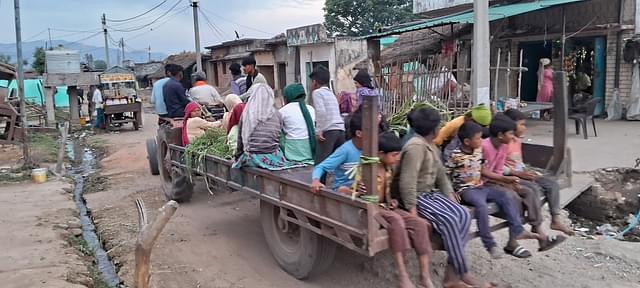
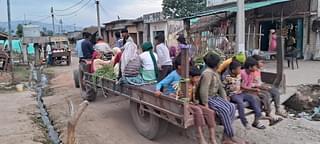
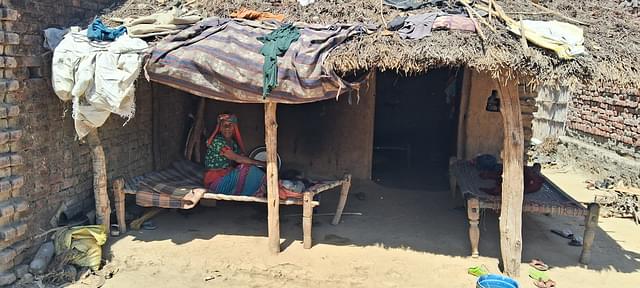
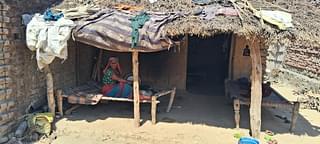
Bhaale Singh leads us to his home, a traditional kaccha makaan (mud house) constructed from straw from the jungles and clay, while also pointing out the new house being built under Pradhan Mantri Awas Yojana (Gramin) for his son, who was away working on neighbouring farmlands.
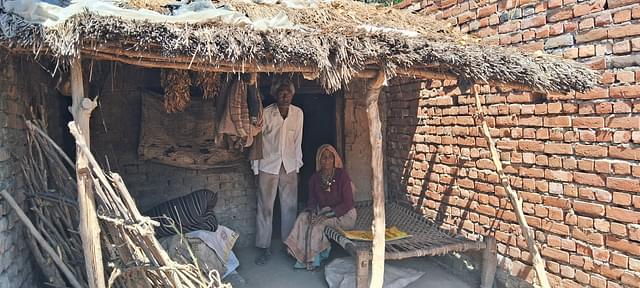
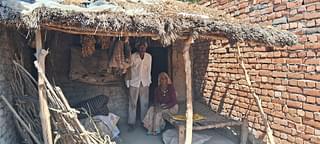
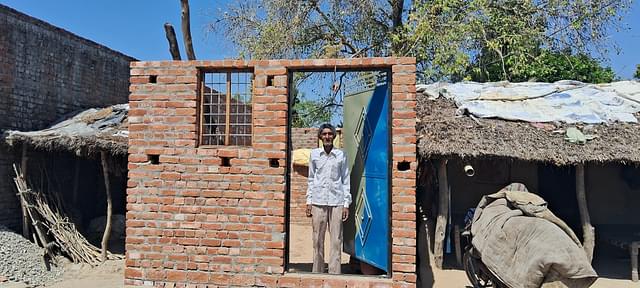
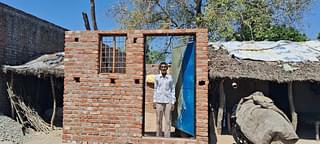
These houses, currently under construction, have been facilitated through the PM-JANMAN, and have been allocated to all extended family members who had been residing in kaccha houses for years. In addition to proper homes, the provision of water storage tanks, electricity meters, and gas connections has also been established for these households.
While showing the house and the new water connection, he adds, “Humaare liye kaam Modi ne kiya. Koi nahi aaya pehle. Iss baar vote ussi ke naam ka jaayega humaari janjaati se.”
In further discussions, Seema Rani (Pradhan) tells Swarajya, “Humaari peedi tak iss gaon se bhaut kum log baahar nikle. Ab nayi peedi se bhi kul mila ke bhoksa ke 7-10 log baahar nikle hai, Bijnor ya kotdwar sheher mein padaayi karne.”
(Very few people from our generation ventured outside this village. Now, even from the new generation, only 7-10 individuals have gone outside to study, either in Bijnor or Kotdwar cities.)
26-year-old Kavita Rani, is of the few who finished her education outside her village. She has returned to work as the Panchayat Sahika (secretary) at Kuankheda (another Bhoksa tribal village), after completing her BA and MA in political science from Kotdwar.
She tells Swarajya, “In the Bhoksa tribal region of Uttarakhand, inclination towards education is more. My father also grew up there with his grandparents and had the chance to study. He ensured that we prioritised education, even though we had to cross jungles day and night to reach our college. But that is not the case for everyone.”
“In our village, school is up to eighth standard. For further studies, students must attend another school in a neighbouring village. While most kids go to school until the eighth, many refrain from going outside the village and instead engage in farming and other labour activities.”
“In that also, only 10 per cent are girls. Now a new school has been set up in our own village, along with a hostel. This had been stalled for years, but it was completed now in last 2-3 months through the scheme. Kids from all the Bhoksa villages in UP will now come here.”
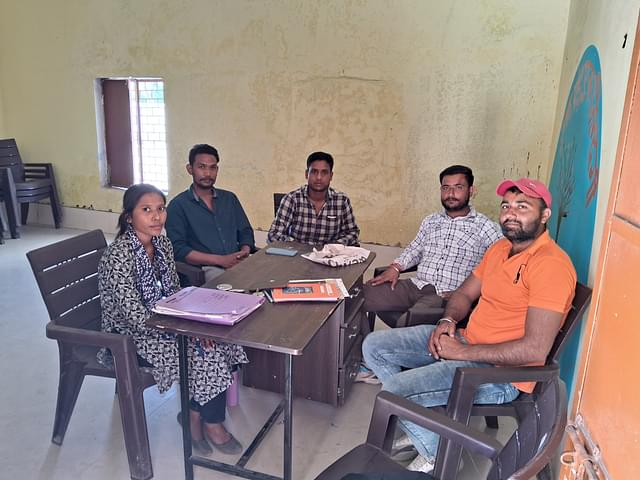
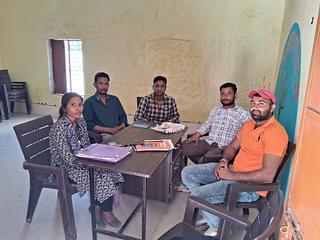
Four months of JANMAN Yojana
In another village, Chauhadkhata, inhabited only by the Bhoksa population, tribals say, “Nobody has come here in so many years, except during elections when local leaders would come asking for votes. But in these last months, many people visited our villages.”
“Yaha pe survey hua, makaan, sadke aur streetlight ka, Aadhar aur Ayushman card ke liye, aur ek mahine ke andar, sabhi laabhaarthi ka registration poora ho gaya,” a group of villagers add, openly expressing their appreciation for the work and eagerly leading us to their homes and around the village to show the changes.
(Surveys were conducted for housing, roads, and streetlights, as well as for Aadhar and Ayushman cards, and within a month, registration for all beneficiaries was completed).
Under PM-JANMAN, various government programs, including Pradhan Mantri Awas Yojana and Pradhan Mantri Gram Sadak Yojana, as well as financial empowerment schemes such as Jan Dhan accounts, self-help groups, and MUDRA Yojana, have been established for these communities.
Additionally, schemes like Swachh Bharat, Gobardhan Scheme, and Pradhan Mantri Matru Vandana Yojana have also been introduced to address various aspects of their welfare and development.
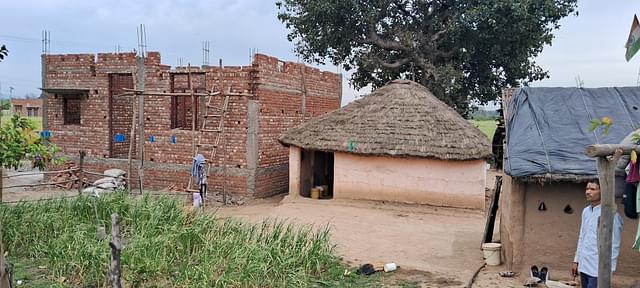
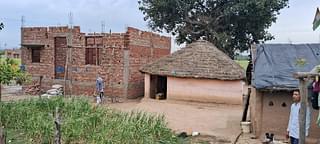
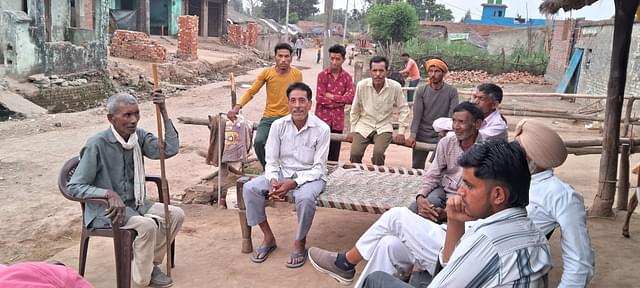
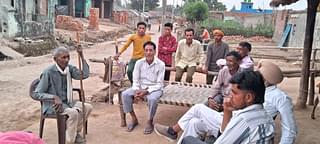
Sarita Prajapati, Social Welfare Officer, who has been on the ground facilitating the progress tells Swarajya, “Between 15 November 2023 and 15 January 2024, many projects that had been stagnant for years were swiftly pushed forward, and new initiatives were also managed.”
She adds, “This achievement was made possible because all relevant officials were personally present on the ground, overseeing each program and its execution. This included officials from the Uttar Pradesh tribal department, central ministries, and the social welfare department."
"Our Chief Development Officer, Purna Bohra, along with other senior officials, conducted camps in these villages to educate tribal communities about their entitlements. The villages, in a month, saw so much activity through these camps, that also made them aware of the development that has now come to them.”
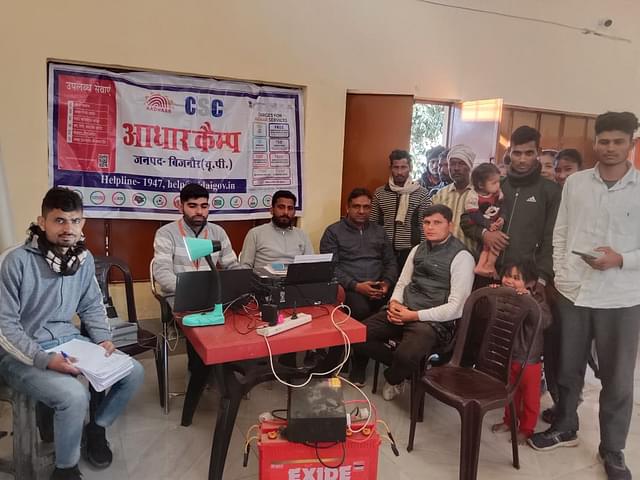
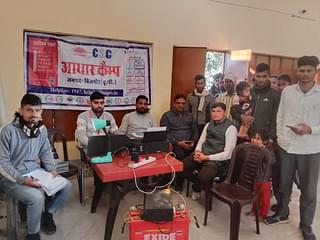
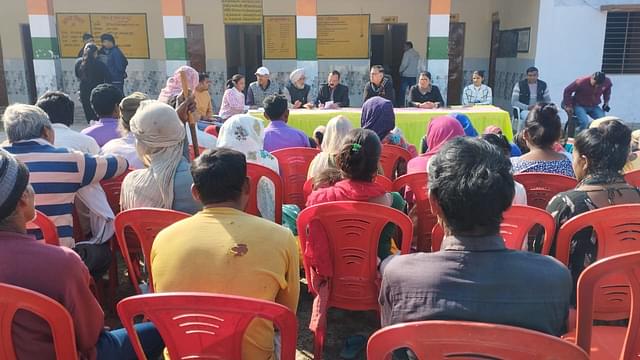
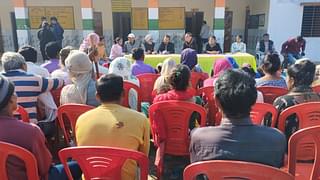
Looking at the numbers under the scheme, in addition to homes, electric and gas connections, tap water connections and 3138 Ayushman cards were issued during the camps. Furthermore, 359 ration cards, which were previously pending, have now been issued.
“Previously, reaching these communities was challenging due to their remote location and paperwork complications. However, with the focused instructions from our Prime Minister, all officials collaborated. Within two months, we have successfully completed 100 per cent of the groundwork to identify and implement necessary interventions for these villagers,” she added.
What are the expectations for the future
As a result of these interventions, the Bhoksa tribals of Uttar Pradesh are now entitled to the basic facilities and benefits that they rightfully deserve, which they missed for years.
However, while the tribe receives support from the centre, sustaining the adoption of these changes remains crucial, beyond infrastructural advancements, to elevate them on the socio-economic ladder.
Suraj, Junior Assistant at the social welfare department, says, “Through the government support, we are also trying to ensure that their cultural identities and practices are retained. As for the Bhoksa community, we are continuously trying to make the younger generation realise and bring back their rich cultural practices, crafts and heritage to the mainstream.”
Teachers at the local school echo similar sentiments, noting that while they observe infrastructural improvements in the villages, uptake of these changes still requires attention.
Nidhi Sharma, come from the nearest city, Kotdwar, since the last five years to teach at the school. She says, “The new school which provides education till 12th standard will hopefully increase the interest of the parents and the kids. We are waiting for the school to be operational, after which the students can be transferred easily, and we can reduce the dropout numbers.”
The newly built Anganwadi, will also help kids at early age to be engaged in learning, and not stay at home. Some young individuals, who dropped out of school, their education after the 8th grade, also express, “If this new school opens and if allowed, we will enroll to finish school, and then move to college outside.”
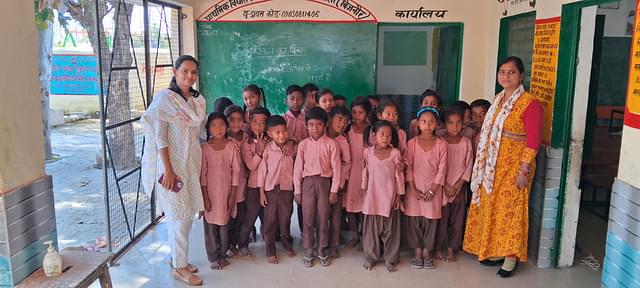
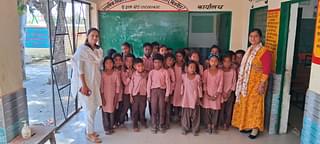
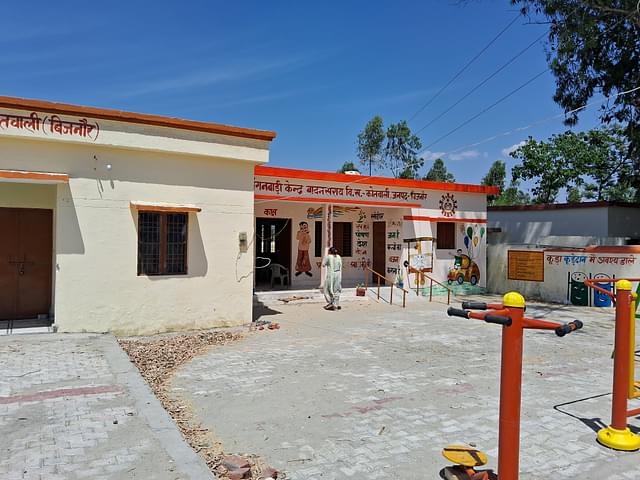
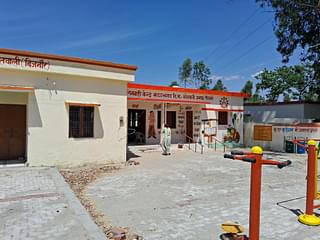
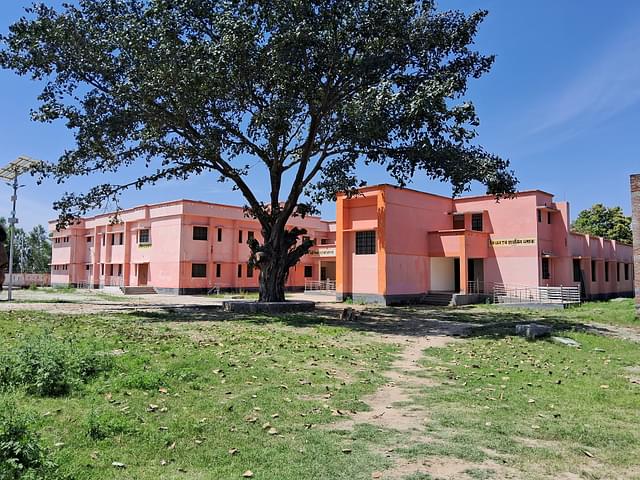
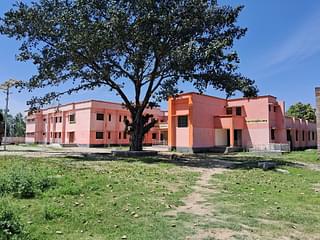
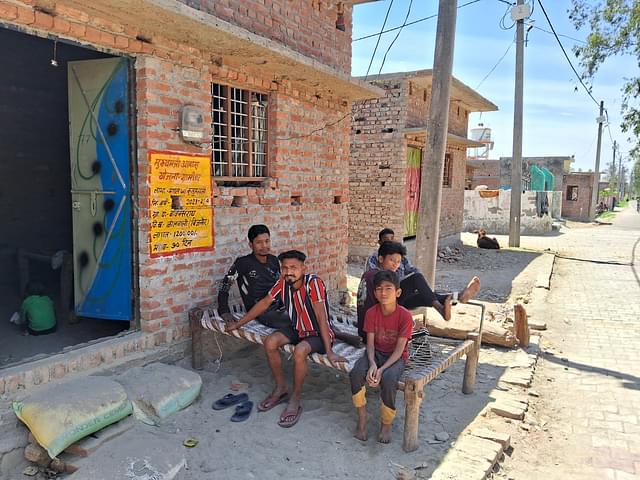
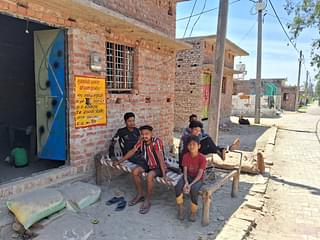
According to the Census of 2011, the tribal population comprises approximately 8.9 per cent of the total population in India. Furthermore, with the election fervour in full swing, the tribal belts represent 47 out of the 543 Parliamentary constituencies.
While Bhoksa tribe remains the sole community to benefit through the JANMAN Yojana in UP, 75 PVTGs are residing in 22,544 villages across 220 districts across the country, which are also undergoing developmental initiatives through comparable processes under the scheme.
Save & read from anywhere!
Bookmark stories for easy access on any device or the Swarajya app.
Support Swarajya's 50 Ground Reports Project & Sponsor A Story
Every general election Swarajya does a 50 ground reports project.
Aimed only at serious readers and those who appreciate the nuances of political undercurrents, the project provides a sense of India's electoral landscape. As you know, these reports are produced after considerable investment of travel, time and effort on the ground.
This time too we've kicked off the project in style and have covered over 30 constituencies already. If you're someone who appreciates such work and have enjoyed our coverage please consider sponsoring a ground report for just Rs 2999 to Rs 19,999 - it goes a long way in helping us produce more quality reportage.
You can also back this project by becoming a subscriber for as little as Rs 999 - so do click on this links and choose a plan that suits you and back us.
Click below to contribute.

